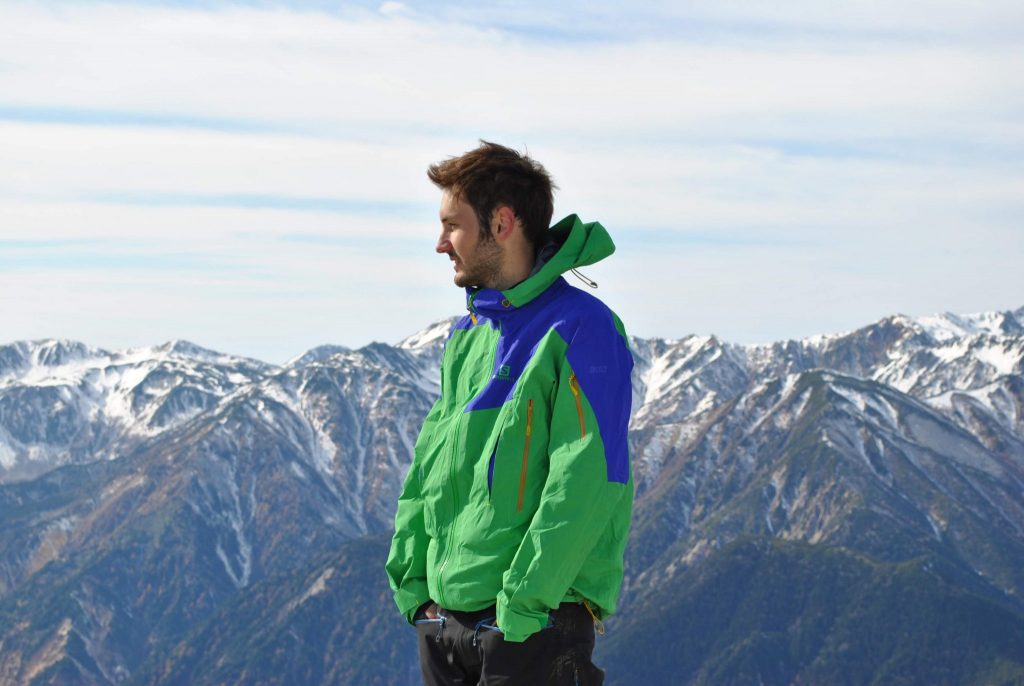
Can you say a few words about yourself?
I come from Ardèche, a sunny remote French region located between the lavander fields of Provence and the peaks of the Alps. The peaks somehow gained my interest faster than the lavender, so I moved to Grenoble to start university. In such an environment, snow and ice logically became my scientific interests. I later learned the air was full of small particles that could deposit on glaciers, but also play a role meteorology and climate. I quickly became a cloud nerd. More than enough motivation for me to start a PhD focusing on the effect of anthropogenic particles on clouds, at the Paul Scherrer Institute close to Zurich. I was then lacking the last facet of fine particles, together with viruses: the effects on human health…
Did you choose your profession or did it choose you?
My deep passion for nature and the outdoors always fed my scientific curiosity, which somehow dictated my path in research. Hiking, ski touring and mountaineering brought me to the glaciers I later studied, then paragliding brought me to the clouds I was studying. Isn’t that a lovely way to mix theory and practice?
How and why have you joined the LAPI?
The lab is basically focusing on all my topics of interest, and offers world-class interdisciplinary research opportunities. Joining a project in which I will, as a physicist, collaborate with chemists, biologists, virologists, etc. is something I find truly exciting. And Lausanne itself seems to be a great place where to live!
Can you speak about the projects where you have participated?
The link between all my previous projects is black carbon particles, emitted during combustion: I studied the effect of their deposition over Himalayan glaciers during my master, and the way they can form cloud and fog droplets during my PhD. I find these particles particularly interesting because we, as humans, emit most of them in the atmosphere, and could drastically limit our emissions if we decided to. Luckily, I’ve always really enjoyed the projects I was involved in, so I see no reason why this would change here in the LAPI!
What have been some of your biggest challenges?
One thing that comes to my mind: selectively sampling cloud droplets (i.e. removing all other particles) using a pumped counterflow virtual impactor (PCVI) at the Jungfraujoch station in the Berne alps, 3580 m altitude. I remember spending entire nights, alone up there, trying to carefully check everything, removing the ice that often clogged the line, and fighting frustration because I couldn’t make it work. When I finally managed, I needed 3 days of sleep but I probably was the happiest person in the world.
What have been some of your biggest successes?
Well, I think just replied that one.
You split your time between teaching and research. How do you view these two roles?
Something I experienced while teaching during my PhD was beautifully summarized by the American physicist Richard Feynman: “If you can’t explain something in simple terms, you don’t understand it”. Teaching offers a different angle on one’s own topic, so in the end I learned as much as the students, which made it extremely enjoyable.
Where is the most interesting place you’ve been?
In terms of human relations, the month I recently spent vagabonding in Zimbabwe was a great shock. This country is still facing terrible political and economic conditions. For safety reasons, I was strongly advised by the vast majority of people not to enter the country. Ignoring these alarms was probably one of the best decisions I have ever taken.
In terms of landscapes, Patagonia was something like a daydream. But no need to go that far to find great places, I found incredible wonders in many swiss canyons and peaks…
A free thought for the end?
Follow your heart, but bring your brain with you, just in case.